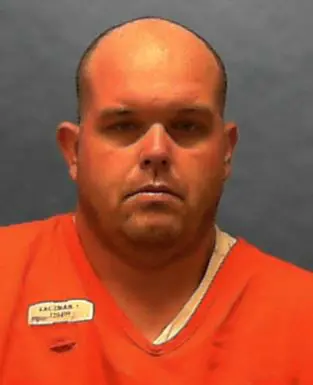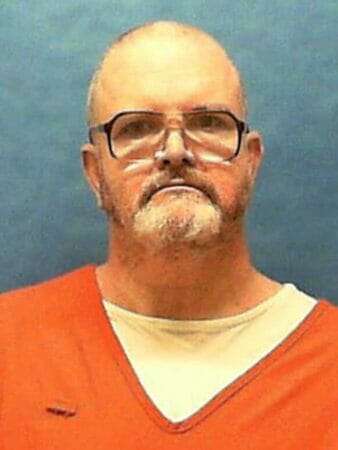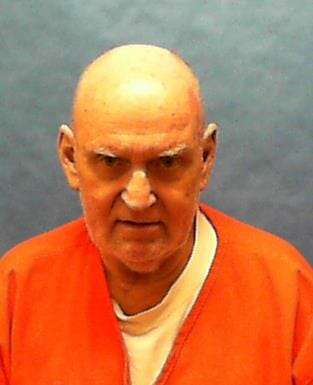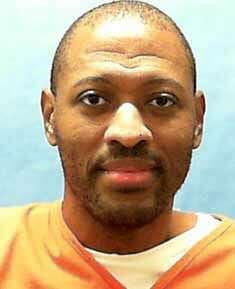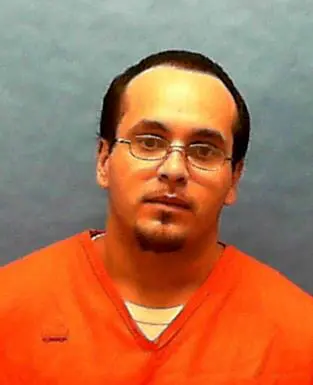
Hector Sanchez-Torrez was sentenced to death by the State of Florida for the robbery murder of Erik Colon. According to court documents Hector Sanchez-Torrez would shoot and kill the victim Erik Colon during a robbery. Hector Sanchez-Torrez would also shoot and kill Levi Rollins during a separate event. Hector Sanchez-Torrez would be arrested, convicted and sentenced to death.
Hector Sanchez-Torrez 2021 Information
| DC Number: | J40507 |
|---|---|
| Name: | SANCHEZ-TORREZ, HECTOR G |
| Race: | HISPANIC |
| Sex: | MALE |
| Birth Date: | 04/17/1989 |
| Initial Receipt Date: | 04/08/2010 |
| Current Facility: | UNION C.I. |
| Current Custody: | MAXIMUM |
| Current Release Date: | DEATH SENTENCE |
Hector Sanchez-Torrez More News
On the evening of September 9, 2008, Erick Joel Colon had been at a friend’s house playing board games and left at 11 p.m. to walk home. He had his cell phone with him at the time, as well as a wallet with cash in it.
Colon’s body was discovered lying on the sidewalk close to his home in the early morning hours of September 10, at 1:30 a.m. The area was very dark. When Colon’s body was discovered, his wallet and cell phone were missing.
Colon had been shot once in the head, but had no other injuries. The medical examiner testified that the characteristics of the gunshot wound indicated that the muzzle of the gun was in direct contact with, and pressed hard against, the skin. The entrance wound was just below the left eye, and the exit wound was on the right back side of the head.
On September 30, 2008, Colon’s mother testified that she received a phone call from her son’s number. When she answered, a young Hispanic woman was on the other end. Colon’s mother began crying and told the caller that the cell phone belonged to her murdered son. The caller hung up.
Sanchez–Torres’s younger sister, who was fifteen years old at the time of the crime, testified during the penalty phase that she had discovered the cell phone and recognized that it was not one of her brother’s cell phones. She found a contact listing for “mom” and called it. A woman answered. She was crying and explained that the cell phone belonged to her murdered son. Sanchez–Torres’s sister then hung up and called her mother, who told her to turn off the phone and wait for her to come home. Sanchez–Torres’s sister also called Markeil Thomas, the codefendant in this case and Sanchez–Torres’s good friend and roommate, who told her to turn off the phone and pull out the battery, which she did. She gave the phone to Thomas, and her mother got it from him.
Detective Sharman with the Clay County Sheriff’s Office spoke with Sanchez–Torres’s mother, Maria Torres, on October 1, 2008. Torres stated that she had found the phone and that her daughter had used the phone to call someone who said the phone belonged to her son. Torres stated that she had taken the phone from her daughter and had thrown it in the trash. At some point later, Torres told law enforcement that she had given the cell phone to someone who had destroyed it. The Clay County Sheriff’s Office was then able to locate pieces of the phone.
On October 2, Detective Sharman visited Sanchez–Torres in the Duval County Jail to question him about the phone. Sanchez–Torres stated that Thomas had bought the phone from an acquaintance known as “D.” When informed that the phone belonged to a murder victim, Sanchez–Torres denied having anything to do with the murder. The Clay County Sheriff’s Office was able to identify and locate “D,” who denied ever selling or giving Sanchez–Torres or Thomas a phone.
Detective West, also with the Clay County Sheriff’s Office, testified that he spoke with Torres on March 5, 2009, when he interviewed her at her home. When he met with her, he informed her that he had drafted an arrest warrant for her for tampering with the cell phone and showed her an unsigned arrest warrant. Torres testified that the next day, she told Sanchez–Torres about what happened, and he told her to contact the detectives and tell them to come see him.
After Detective West received a phone call from Torres, in which she stated that Sanchez–Torres wanted to speak to him, Detective West proceeded to the Duval County Jail to interview Sanchez–Torres. During the initial part of the interview, Sanchez–Torres stated that Thomas had shot the victim and drew a diagram of the scene and the body to describe what happened. Detective West left the room, and Sanchez–Torres wrote out a three-page handwritten statement, in which he stated that he, and not Thomas, had shot the victim. Detective West returned to the room and took Sanchez–Torres to a different location in order to conduct a videotaped interview. Sanchez–Torres then told Detective West again that Thomas was the shooter.
The State also presented evidence regarding Sanchez–Torres’s prior violent felony, which was a murder that took place in Duval County on July 20 or 21, 2008, less than two months before the murder in this case. Sanchez–Torres had confessed to shooting the victim in the Duval County murder, stating that he shot the victim because the victim had repeatedly threatened to kill his then-pregnant girlfriend. Sanchez–Torres was tried and found guilty of first-degree murder in the Duval County case and was sentenced to life in prison in December 2009.
Finally, the State presented a victim impact statement from the victim’s mother. Presentation of defense witnesses was postponed until after the completion of codefendant Thomas’s trial, at which the same judge presided. Pursuant to his guilty plea in this case, Sanchez–Torres was required to testify during Thomas’s trial.
The penalty-phase proceedings then continued in Sanchez–Torres’s case.1 Sanchez–Torres presented mitigation evidence in the form of testimony from numerous witnesses consisting of his family, friends, friends of the family, former teachers and coaches, and supervisors and fellow employees at the dog track where he worked. They universally described Sanchez–Torres as a respectful, polite, good, kind, loving, caring, and giving person, who was also a “clown” and a “goofball.” Specifically, they described him as family-oriented; bright and intelligent; someone who was always quick to help in any way, including helping people financially, assisting others with moving, volunteering, providing transportation to others, and being there if someone needed to talk; someone who got along with others and made friends everywhere he went; and someone who loved animals. Several individuals testified that Sanchez–Torres believes in God and attended church on a regular basis as part of the youth group. Witnesses also testified that Sanchez–Torres was a civic-minded individual who volunteered often at Hispanic heritage events.
Growing up, Sanchez–Torres played baseball. He was a very good baseball player and made the all-star team. He got along well with the other players and the coaches and was a team player. One of Sanchez–Torres’s dreams was to play professional baseball.
A former high school teacher testified that Sanchez–Torres would meet her early in the morning so that he could study or do homework in her room in the mornings while she got ready for the day. He was a good student, and his grades improved while he was in her class. He tried out for the baseball team, but was “crushed” when he did not make the team.
When Sanchez–Torres was fifteen years old, his parents got divorced based on problems caused by his father’s gambling and drug and alcohol abuse problems, which his parents had kept from him. His mother testified that Sanchez–Torres was angry about the divorce. After the divorce, Sanchez–Torres’s father moved to Connecticut. Sanchez–Torres then moved to Connecticut to be with his father, but only stayed for a short period of time upon discovering his father’s gambling and drug abuse problems and after being disappointed that his father did not spend time with him. Sanchez–Torres then moved back to Jacksonville to live with his mother and younger sister.
Shortly thereafter, when Sanchez–Torres was sixteen years old, his father died as a result of problems caused by the alcohol and drug abuse. Sanchez–Torres’s mother testified that Sanchez–Torres was “devastated” by his father’s death. One of Sanchez–Torres’s aunts testified that Sanchez–Torres’s father’s death was “very hard for him.” Sanchez–Torres did not pass the FCAT and therefore was unable to graduate from high school,2 which was stressful to him.
Sanchez–Torres started working at the dog track when he was in high school and was still employed there the day of the murders. His fellow employees and his supervisors at the dog track universally described him as a good employee who took his work seriously and was quickly promoted because he was respectful, professional, and had no issues with attendance. He came in on his days off if someone called in sick and supervised eight other employees. He was known as a reliable employee and someone people could count on. He also frequently gave other employees rides to work.
Sanchez–Torres’s girlfriend became pregnant, and his mother testified that Sanchez–Torres was very happy and excited about being a father. However, Sanchez–Torres’s high school teacher testified that he had “mixed feelings” because being a parent was also a lot of responsibility. His girlfriend gave birth shortly before the murder in this case.
Several individuals testified that Sanchez–Torres would give or lend them money. He worked overtime at the dog track because he was trying to help his mother with the rent, as well as make payments on his new car that he had bought. He also felt that because he was going to be a father, he needed to make more money. About a month before the murder in this case, Sanchez–Torres moved out of his mother’s apartment into an apartment downstairs with the codefendant, Thomas.
Sanchez–Torres also presented testimony from his former counsel in this case, who had represented him for a short period of time. She testified that Sanchez–Torres was a “model client” who was always pleasant, personable, and cooperative. She suggested that Sanchez–Torres take a polygraph test, and Sanchez–Torres submitted to a polygraph examination without hesitation.
Sanchez–Torres also presented testimony from the polygrapher who conducted his polygraph examination. The polygrapher asked Sanchez–Torres whether he had shot the victim, to which Sanchez–Torres answered that he did not. Sanchez–Torres passed the polygraph test with a score that was “very, very good.”
Finally, Sanchez–Torres read a statement in which he apologized to the victim’s family, stating that he could not “apologize enough” and that he was taking responsibility, but denied that he killed the victim, stating that it was not supposed to “go down the way it did.”
Following the penalty-phase proceedings, the trial court found the following aggravating circumstances: (1) Sanchez–Torres had been convicted of a prior violent felony; and (2) the murder was committed during the course of a robbery (merged with pecuniary gain). The trial court gave both aggravators great weight. The trial court found that the cold, calculated, and premeditated aggravator was not established beyond a reasonable doubt because “it is not unreasonable to infer that evidence presented during the sentencing proceedings could suggest that the fatal gunshot was the result of an accidental discharge of the gun.”

